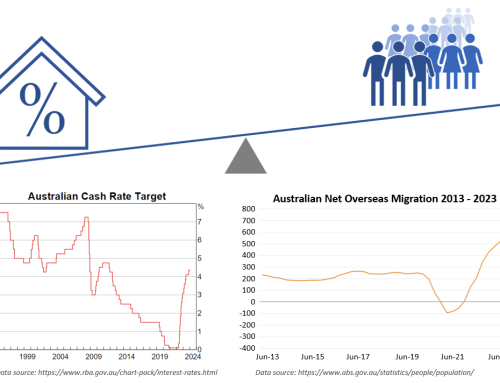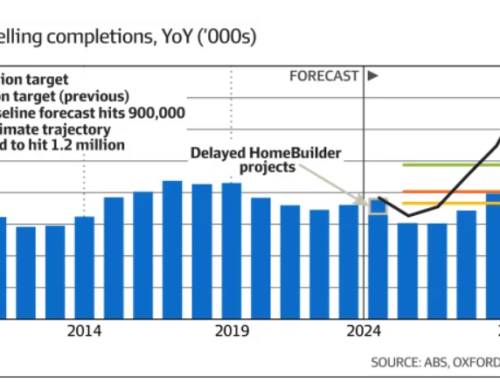The pros and cons of tenders – do you know the difference between a minefield and a goldmine?
As a business coach who works with B2B and trade-based businesses, I’m often asked, “Are tenders are a good way to win work?” It’s a good question, and as a mentor who has worked with hundreds of businesses, I can speak from experience when I say that the tender process has its upsides and downsides.
Yes, tenders can present some solid opportunities to work with larger organisations such as commercial construction companies and government departments. These are the goldmine tenders. However, if the tender is not the right fit for your business or if you aren’t properly prepared for what’s involved, the tender process can become a black hole of wasted time and effort. Hence the name minefield tenders.
Common types of tenders
There are typically two main types of tenders:
1. Request for Information or an Expression of Interest (RFI/EOI)
Clients (that is, the business requesting the services) typically use these as a first fence to create a shortlist of service suppliers for an upcoming contract. It’s an opportunity for you to introduce your business to the client. Your main objective is to capture their interest so that they want to find out more about what you can do for them.
2. Request for Proposal (RFP)
This is a more formal document and what people think of when they hear the word ‘tender’. Since the client expects to use the responses to the tender to make a purchase decision, a formal proposal should include a lot of detailed information on how your company can deliver on the client’s requirements and of course, the costs of your solution.
Main sources of tenders
There are three main sources of tender opportunities: open, closed and single response.
Each has its pros and cons that may influence your decision to apply, as well as how much time and effort to invest in putting together your tender document.
Open tenders
You will often find these listed on websites, such as TenderLink, AusTender or Australian Tenders. The opportunities listed may be with private companies, government departments or local councils. They’re usually a cattle call; lots of companies will respond and there’s very little visibility around who you are competing with for the job.
Pro: Anyone can respond.
Con: Everyone will respond, making your chances of winning realistically quite slim.
My advice as a business coach: Think very carefully before investing too much time in these types of applications. Is it worth the time and effort required? Unless it’s a job that really excites you or a rare opportunity to grow your business by breaking into a new sector, it might not be worth your while.
Closed tenders
This is where companies may only apply in response to an express invitation by the client. Usually only a handful of companies are invited to participate in the process.
Pro: You have a much better chance of winning the business; there is less competition and the client is obviously already interested in what you can do for them. You are also more able to conduct research into both the incumbent and your competition that can improve your odds of moving up the list of applicants.
Con: The greater the opportunity, the more effort is required; it can take hours (even weeks) of hard work to put together a really great tender document. You’ll want to be sure that, overall, the opportunity outweighs the risks of not winning the business.
My advice as a business coach: When allocating your efforts, most of your time should go into information gathering and building relationships within the business, rather than on creating the document itself. By taking this approach, you
- could uncover intel that will give you an edge over the competition
- may discover reasons why the tender is not worth pursuing, thus saving you a lot of time and effort.
Single response tenders
This is where you are the only supplier submitting for the tender. In these cases, it’s usually a box-ticking exercise where the client’s internal policy requires them to go through the motions.
Pro: Obviously there’s not a lot of competition involved – you are very likely to win the contract.
Con: None really.
My advice as a business coach: Be careful not to rest on your laurels. Every time you interact with any existing or potential client you must take the opportunity to wow them with your best effort (even when the work is in the bag).
To bid, or not to bid: targeting the right tender opportunities
As I mentioned earlier, tenders can be goldmines – good opportunities for predictable work at good margins – or they can be minefields. How do you know which are which? In addition to the considerations above, my business advice is to assess the opportunity based on these following questions:
- Do you provide what the client wants?
- Is it your core business?
- Can you demonstrate that you have done it before and show results?
- Do you have a relationship with the company?
- Are the contract terms acceptable?
- Is this tender for your ideal client?
- Can you fund the job?
If you are finding yourself saying “yes” to most of these, then you are good to go. If the answers are a bit mixed, think very carefully about whether or not to move forward with your application.
Research is the key to tender success
Most of your effort should go into getting the lay of the land before preparing and submitting your tender application. I mentor business owners to gather as much information as possible to ensure they have a clear picture of what they are dealing with.
Understanding the client
First up, you’ll need to identify who the decision makers and influencers are and what makes them tick. Key players will include:
- The Driver – your main point of contact when liaising with the company about the tender
- The Decision Maker – this is not always the same person as The Driver. Since they have the final say, the decision maker will require the most time and attention
- Higher authority – in some larger organisations, even once the decision has been made, they will need final approval from a CEO, board etc. This is usually a formality, but until they’ve signed off, hold off on celebrating the win.
- Box tickers – these are representatives from procurement, finance, IT, etc. They are mainly involved to lend their operational and/or technical expertise to the process and they tend to have limited influence on the final decision.
Understanding the situation
Secondly, you’ll need to understand the current state of play. Basically, what outcome are they trying to achieve.
- Why is the client going out to tender – is this a new service they need fulfilled or do they have a current provider that they are dissatisfied with? Do they just want to see what other providers can offer?
- Have there been changes in the client’s business or their operating environment that have caused them to seek out something in particular? (For example, is the client now required to comply with a new government regulation? Has the client increased their social responsibility and is looking for providers that meet environmental or diversity standards?)
- Where is the client falling short in serving their clients and stakeholders? How can you help them fill that gap?
Understanding the competition
- Who is the current supplier? (Also known as the incumbent.) What do they do well and where do they fall short? Are they likely to resubmit for the tender? (If not, why not? It could be that the contract was a loss-maker for them. Beware!)
- Who are the other competitors submitting for the tender?
- What are their advantages and weak spots?
- How can you position yourself amongst them as a unique solution?
How to research when preparing a tender application
Online research: When gathering intel about all the key people involved, LinkedIn is your friend. You never know what you might discover about what’s important to them (and therefore how you can best frame your offering).
People inside the organisation but not on the panel: Often those on the panel are bound not to discuss anything privately with individual applicants. Others within the organisation, however, are not. If you discover that a connection of a connection works at the company and may have useful information, ask for an introduction.
Past employees of the company: similarly, if you know anyone who has previously worked at the company, they may also be able to provide a few insights.
Suppliers: those who already supply goods or services to the client or the incumbent may be able to give you the inside scoop on working with the company – what they value, who you need to impress etc.
Annual reports: if you are bidding on a tender for a listed company, you can check out their annual report for strategic directives and objectives from the CEO.
Meetings and walkthroughs: make sure you take any opportunity to get on site – you just never know what information you might pick up that you can use to your advantage. Even just knowing who else is applying can give you an edge (on that: remember not to wear your own uniform or branded polo, lest you give the game away).
5 tips for successfully navigating the tender process
- Follow the format and rules outlined by the client – this is a dealbreaker. Do exactly what they ask. Exactly. Even if it seems like what they have requested is doubling up or obvious or superfluous. Just follow the instructions to the letter. You can always submit a second non-conforming tender if you would like to present options that aren’t allowed for in the client’s format or initial request.
- Address any criteria as directly and succinctly as you can – don’t pad it out with what you want to say (you can put this information in another section if you wish).
- Mirror the way the client talks – by using their own language it helps you seem like a good fit. (Check out their website, social media channels and marketing materials to get a feel for this.)
- Sell your value – don’t ‘we’ all over your proposal (you should be using the word ‘you’ far more often). Talk about how you can solve their particular business problems. This will be different for everyone, so this is why research is so important.
- Submit on time – it seems like a small thing, but it doesn’t look good if you drag your heels – what does it say about your service delivery?
So… are tenders worth the trouble?
When you take into consideration all the work to prepare and submit a strong bid – from the recon missions and cyberstalking through to completing the actual document – it can be a lot of effort for a chance at a win. And you risk end up competing mainly on price because there are limited opportunities to stack the deck in your favour through relationship building. The process of responding to tenders is, by nature, quite impersonal. Generally speaking, the best practices for B2B sales are based on human interactions; building rapport and nurturing relationships are far more successful strategies than focusing solely on aspects like functions and price.
That said, no one wants to miss out on a plum contract simply because they lacked the know-how to prepare and submit a tender document. There’s definitely some value in building that skill set so that, if the opportunity arises, you are ready to get set and go.
Bottom line: if you’re going to do it, do it right. By targeting the right jobs, doing your homework and playing the game by the client’s rules, you are stacking the odds in your favour.
(Image source:https://commons.wikimedia.org/wiki/File:Aerial_photo_of_Deakin_University%27s_Building_C.jpg)
—





